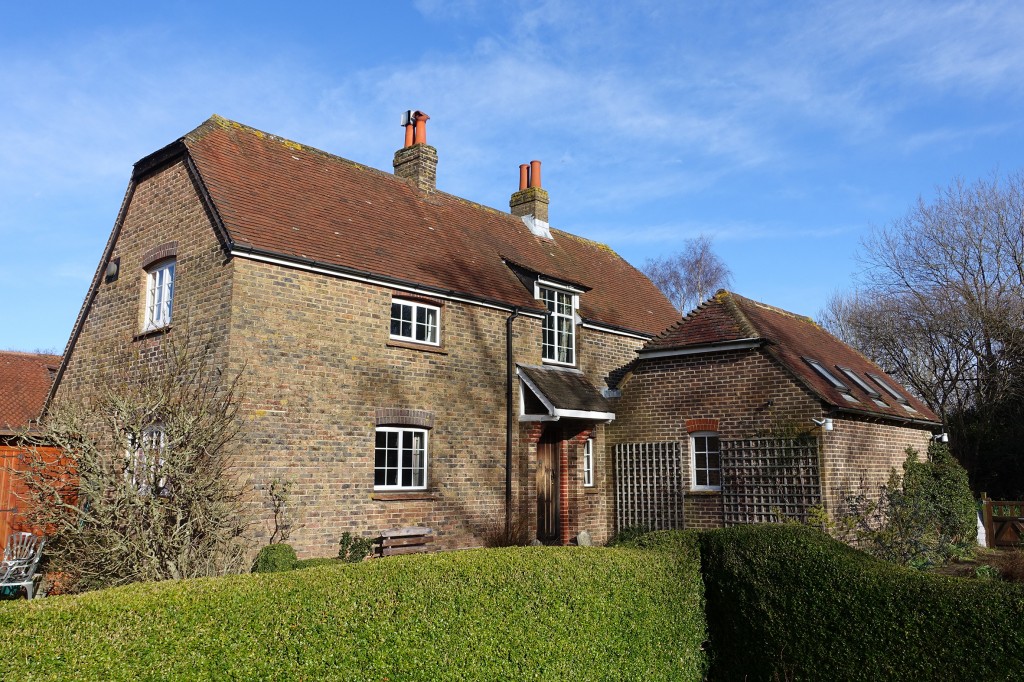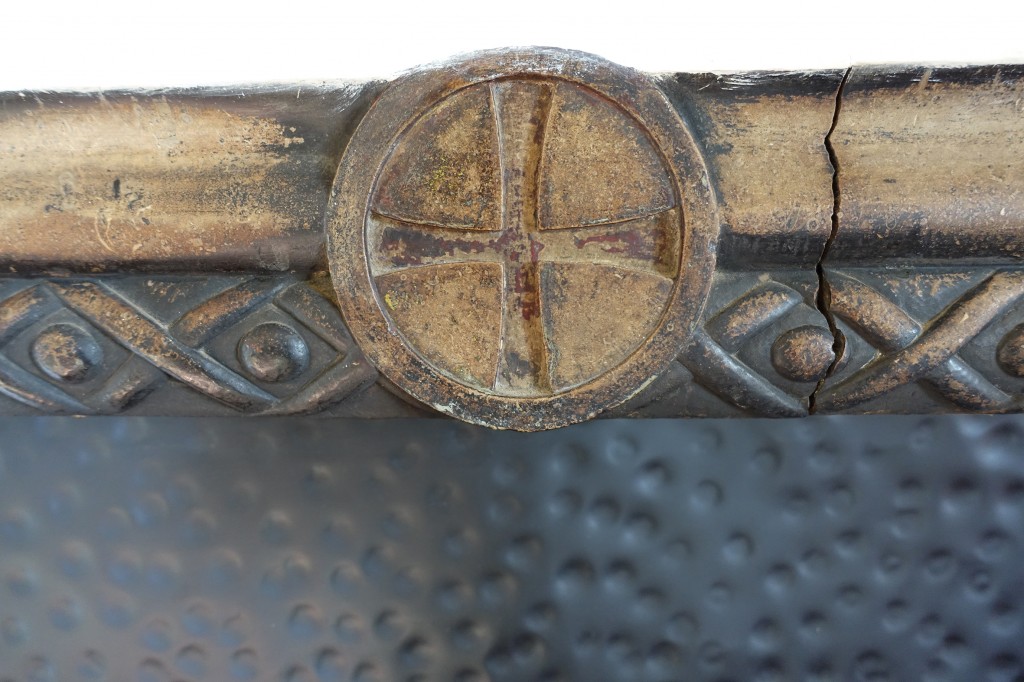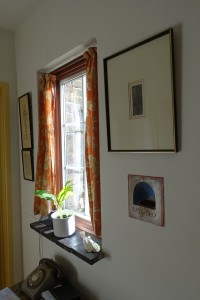
Woodbarton is a hidden artistic jewel in the heart of Sussex. The house is being offered for sale on the open market for the very first time since it was built in 1920. It was designed and decorated by the famous Ditchling based artist, Eric Gill (1882-1940).
Eric Gill was born in Steyning, West Sussex, in 1882. In his formative years he lived both in Brighton and Chichester. In 1900 he moved to London to train as an architect with the firm W. D. Caroe. Gill became ever more disaffected with this path. He studied stonemasonry in Westminster and calligraphy at the Central School of Arts and Crafts. By 1903 Eric Gill had given up his architectural training to become a calligrapher, letter-cutter and monumental mason.
In 1907 Eric Gill found himself drawn back to Ditchling in Sussex. Together with a group of fellow artists Gill worked within the Roman Catholic Guild of St Joseph and St Dominic at Ditchling. These artists lived in community with their wives, children, associates and apprentices. They upheld the principles of the artisan artist. Their work and lives were framed by the monastic rhythm of prayer. Thanks to their work this Sussex village became a centre for the Arts and Crafts Movement. The Guild of St Joseph and St Dominic was founded by Eric Gill, Hilary Pepler and the English poet and artist, Desmond Chute (1895-1962).
Eric Gill brought his artistic and architectural skills to bear when he designed Woodbarton for his associate Desmond Chute.
The house sits confidently in its generous gardens, surrounded by open countryside with stunning views. An old brick path leads past the studio to a welcoming front door which, it is thought, might be the work of the Arts and Crafts designer and architect, Ernest Gimson. That this home was designed by the artist Eric Gill for an artist becomes quickly apparent as the light breaks into the generous hallway. The qualities of light and welcome run through the whole house.

The Christian foundations of the Guild of St Joseph and St Dominic is visible in the carved and painted stone Lavabo by Eric Gill, which is set into the hallway’s wall. It would have contained Holy water for a priest to ritually wash as a sign of inner purity before celebrating the Mass, and for members of the Guild and visitors to bless themselves.

The sitting room is arranged around a fireplace which is framed by a stone carving with a central cross, again by Eric Gill. The stone was originally made for Westminster Cathedral where Gill carved the Stations of the Cross. It was broken in transit and was therefore installed at Woodbarton.
There are stone panels carved with meditative inscriptions by Gill and others set into some of the walls of the house.
Desmond Chute only lived at Woodbarton for a few years before leaving for Rapallo in Italy for his health. Chute would be ordained as a Roman Catholic priest in 1927. After he left, the house became the home of the Guild’s treasurer, Eric Gill’s brother-in-law, Charlie Walters and subsequently the weaver, Valentine Kilbride.

In 1983 the Guild was wound up and Woodbarton was bought privately by the artists, Edgar and Jennifer Holloway. When they arrived there was no plumbing and only an outside toilet and single cold water tap. This artistic couple set about modernising the house to create the comfortable home and studio, in which to live and work, which you see today.
With its three bedrooms, reception rooms and studio the fortunate buyer of Woodbarton will acquire a generous and charming home. This exceptional house forms part of an important story in the history of both the Arts and Crafts Movement and Modern British Art here in Sussex. It provides a remarkable opportunity to live with exceptional art-in a beautiful setting.
The property is being marketed by Clifford Dann with a guide price of £800,000. Partner, Michael Hudson, understands the importance and qualities of this unique property. For more information contact Clifford Dann’s Ditchling office on 01273 843344 or email ditchling@clifforddann.co.uk.
By Rupert Toovey, a senior director of Toovey’s, the leading fine art auction house in West Sussex, based on the A24 at Washington. Originally published in the West Sussex Gazette.